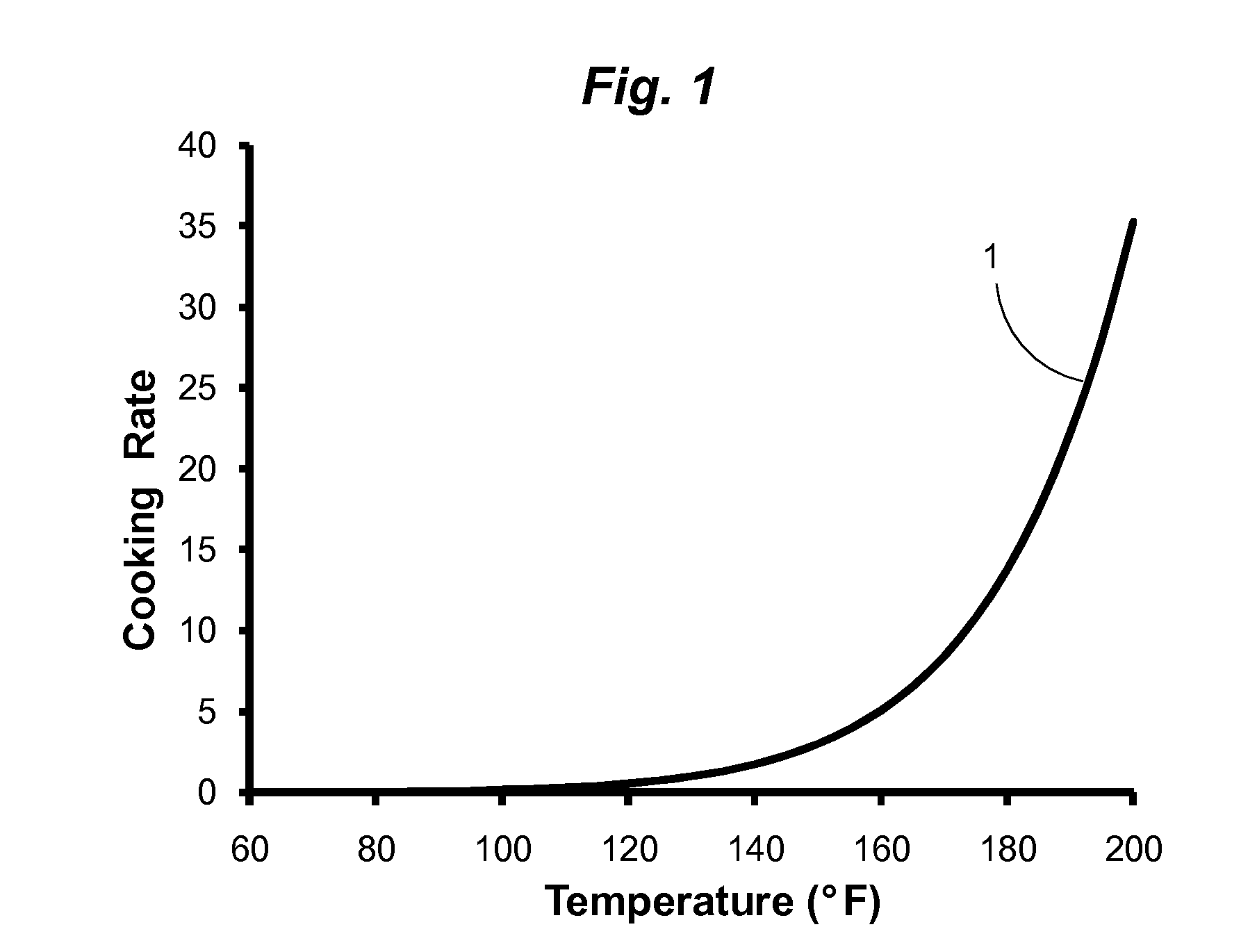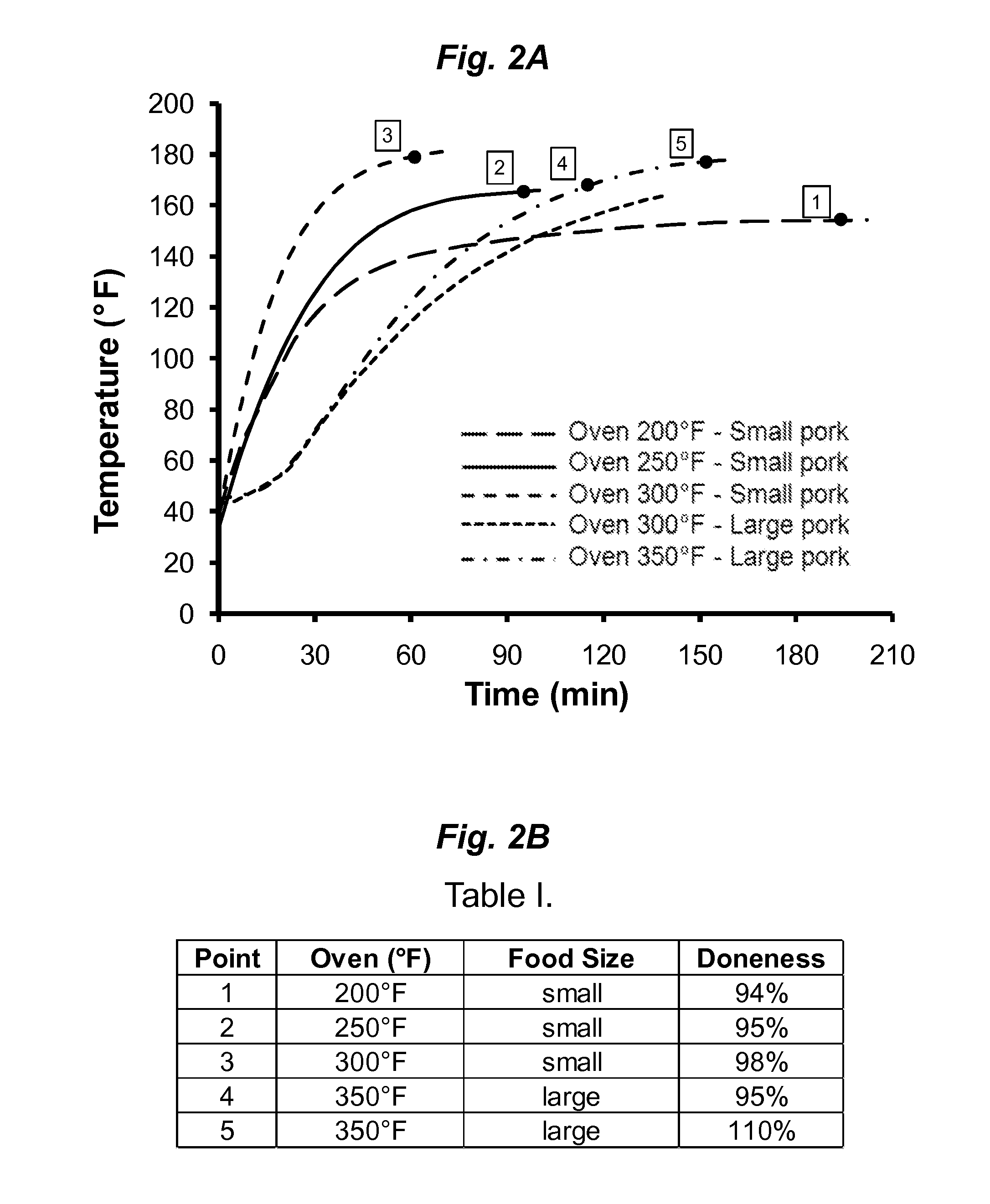Cooking Score Thermometer
a technology of cooking score and thermometer, which is applied in the field of cooking process, can solve the problems of lack of sophistication and reliability, inability to accurately predict when food reaches a certain level of doneness, and inability to so as to reduce the need for experience, accurate predict when food reaches a certain level of doneness, and accurately reflect the cumulative level of cooking
- Summary
- Abstract
- Description
- Claims
- Application Information
AI Technical Summary
Benefits of technology
Problems solved by technology
Method used
Image
Examples
Embodiment Construction
[0048]Although the following detailed description contains many specific details for the purposes of illustration, one of skill in the art will appreciate that many variations and alterations to the following details are within the scope of the invention. Accordingly, the exemplary embodiments of the invention described below are set forth without any loss of generality to, and without imposing limitations upon, the claimed invention.
[0049]It has long been sustained that cooking food is ultimately a chain of chemical reactions triggered by temperature. Scientific studies have revealed many complex reactions associated with cooking, each of them very difficult to describe and quantify in isolation, and almost impossible to predict as a whole system. Trying to explain a cooking process based on precise chemistry is impossibly complex.
[0050]Instead of trying to split the cooking process in a myriad of complex chemical reactions the present invention will show that useful information ca...
PUM
| Property | Measurement | Unit |
|---|---|---|
| temperatures | aaaaa | aaaaa |
| temperature | aaaaa | aaaaa |
| time | aaaaa | aaaaa |
Abstract
Description
Claims
Application Information
 Login to View More
Login to View More - R&D
- Intellectual Property
- Life Sciences
- Materials
- Tech Scout
- Unparalleled Data Quality
- Higher Quality Content
- 60% Fewer Hallucinations
Browse by: Latest US Patents, China's latest patents, Technical Efficacy Thesaurus, Application Domain, Technology Topic, Popular Technical Reports.
© 2025 PatSnap. All rights reserved.Legal|Privacy policy|Modern Slavery Act Transparency Statement|Sitemap|About US| Contact US: help@patsnap.com



